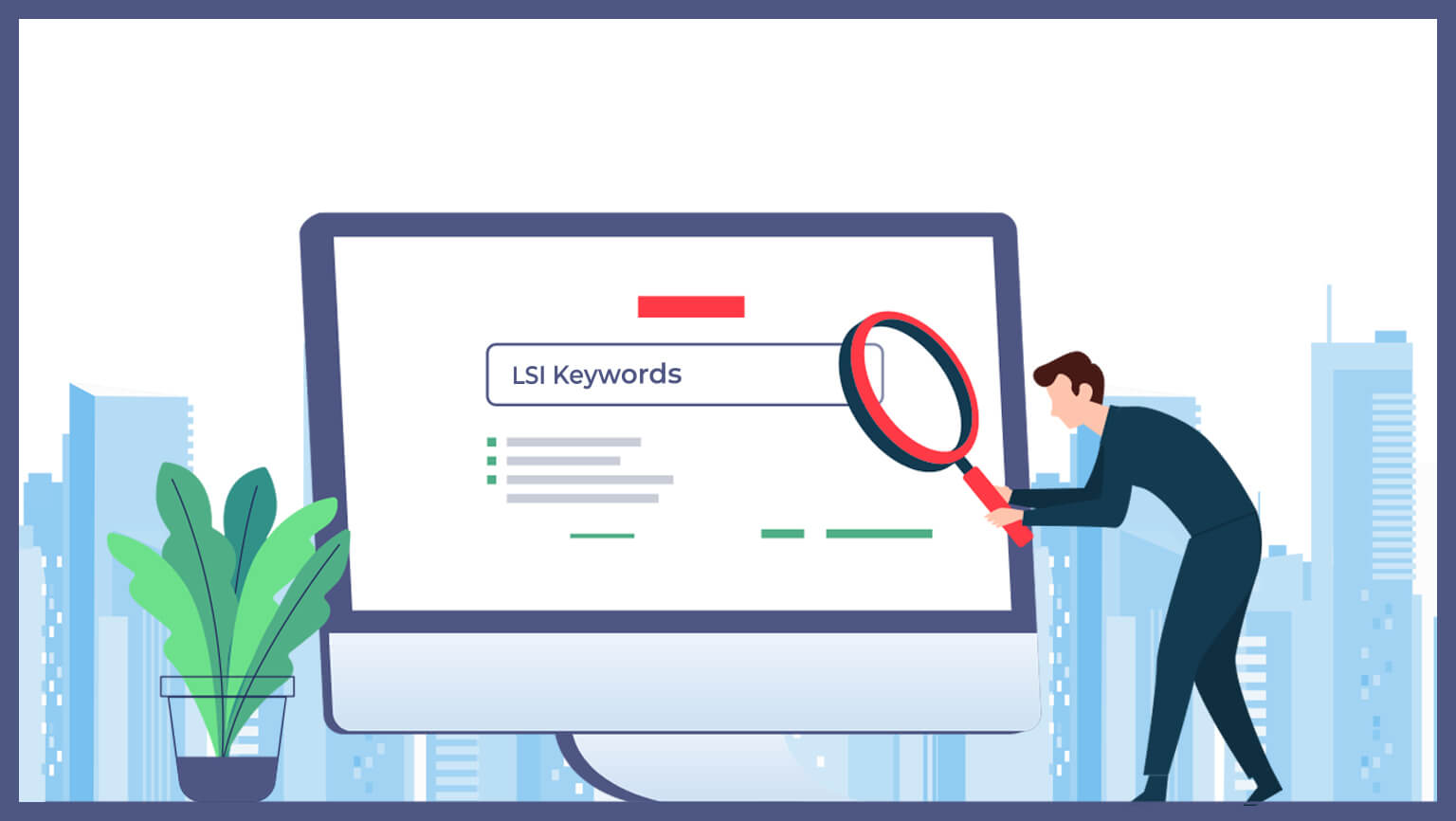Search Engine Optimization (or SEO) is perhaps the best way to make sure your brand not only reaches the target audience, but builds credibility and trust in the fast changing digital space. Almost all purchases begin with an online search. With Google accounting for over 75% of global desktop search traffic and more than 80% of global mobile search traffic, building a presence on this channel is not just a fancy option.
One way to power up your Google search ranking is to use LSI keywords in your content marketing strategy.
LSI stands for Latent Semantic Indexing. Search engines use these conceptually related terms to thoroughly understand a webpage’s content. As a result, you can use LSI keywords to improve your SEO and reel in more interested traffic.
Read on to learn more about LSI keywords and how to use them to boost your SEO.
1.What Exactly Are LSI Keywords?
Latent Semantic Indexing keywords are terms/phrases that are linguistically related to the primary or main keyword. Although synonyms can be counted as LSI keywords, most aren’t directly synonymous, but do share the same context.
Using the primary keyword “project management software,” here are a handful of LSI keywords:
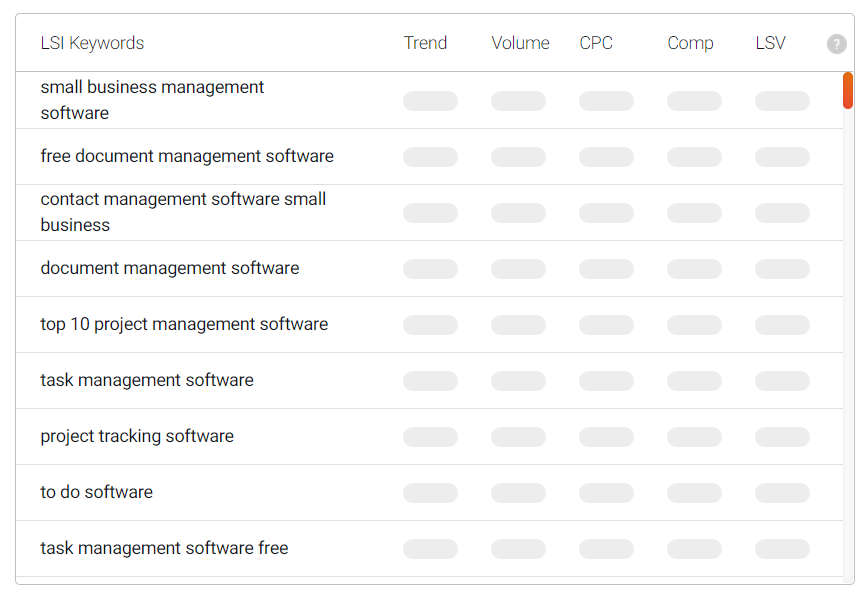
Now, don’t confuse LSI keywords with long-tail keywords.
While a long-tail keyword is an extension of the main keyword with added verbiage, an LSI conveys the same context, using additional or completely different words than the primary keyword. For example, if “car repair” is the main keyword, “automobile repair” is an LSI, while “Atlanta used car repair” is a long-tail keyword.
So, why do you need to use LSI keywords?
2.The Importance of LSI Keywords
In the beginning, Google used to focus only on the primary keyword. As search engines couldn’t understand the difference between keyword-stuffed and meaningful content, the search result quality was less than average. You would often end up with irrelevant search results or flat out crappy content.
For example, when you searched for the keyword “cars,” you may have seen the following mix of results –
- Information of vehicles for sale, repair, rent, and maintenance tips.
- Details about Cars, the animated Disney movie.
- CARS, the Canadian Association for Rally Sports, an organization in Canada.
However, as search engine algorithms became more advanced over the years, they learned to find the latent relationships between primary and secondary keywords using the Latent Semantic Analysis (LSA) process. It allowed search engines to understand content similar to how us humans do. Nowadays, search engines can understand the correlation between semantic words.
So, if your article has LSI keywords such as “clutch,” “gas,” “price,” “mileage,” or “used,” the search engine will know your article is about vehicles. On the other hand, keywords like “animated,” “characters,” or “McQueen” indicate you are talking about the Disney movie. In other words, if you want your content to rank higher, using LSI keywords to increase its relevance and quality is a must.
3.How to Find LSI Keywords
As you can see, you need to use LSI keywords in your SEO strategy. But how exactly do you find them? Here’s what you can do.
A. Google Search Autocomplete
One of the fastest and easiest ways to find LSI keywords is to use the Google Search Autocomplete feature. Whenever you type a search query into Google, it makes a few relevant suggestions. These suggestions are nothing but LSI keywords for the particular search phrase.
For example, when you type out the query “digital marketing,” you get the following LSI keywords. The additional words turn your main keyword into an LSI keyword.
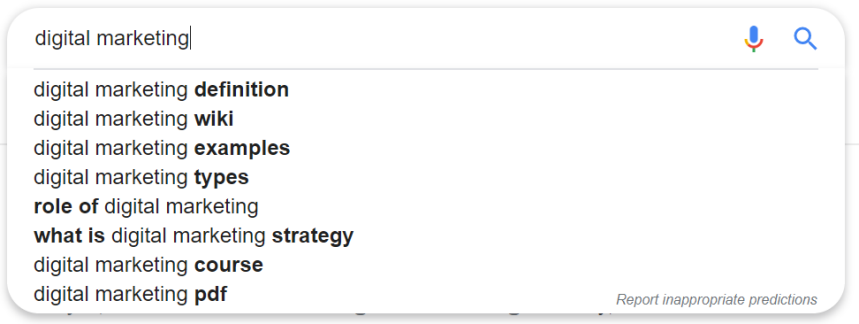
You can also find LSI keywords located at the bottom of the search result page under the heading “Searches related to digital marketing.” You will find different LSI keywords depending on their popularity, relevance, and geographical location.
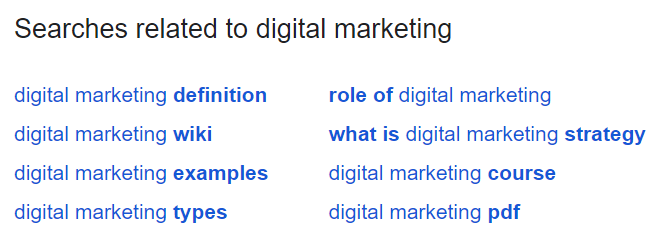
Pro Tip: Download the free Keywords Everywhere extension to see the search volumes of these terms on the right side of the screen.
B. Google Keyword Planner
If you already have an AdWords account, you can use the keyword planner to find LSI keywords. The keyword planner will suggest hundreds of common search phrases relevant to your query.
You will need to log into your AdWords account first. Go to the “Find Keywords” menu and click the “Search for new keywords using a phrase, website, or category” option. Enter your search term and select the most relevant LSI keywords for your topic.
Similarly, you can also use other SEO and keyword research tools such as Moz, Ahrefs, and SEMRush for this purpose. Essentially, you can turn these tools into your own LSI keyword generators.
C. LSI Keywords Tools
You can find various LSI keyword research tools (paid and free) online. LSI Graph is one of the most popular. All you need to do is type your search query and hit the Generate button. However, the free version offers limited daily searches. The paid plans with unlimited keyword searches start at $27 per month.
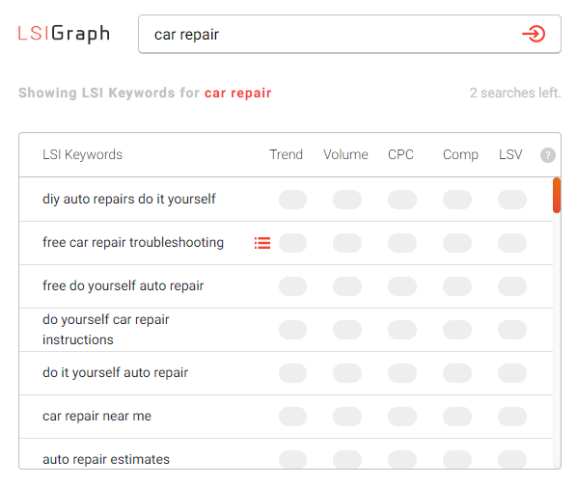
Another free tool, called Keysearch, provides you with one word, two-word, and three-word LSI alternatives. The site offers a free one-month trial with paid plans starting at $17. The advanced version comes with in-depth analytics, the ability to uncover your competitors’ keywords, and SEO content assistance.
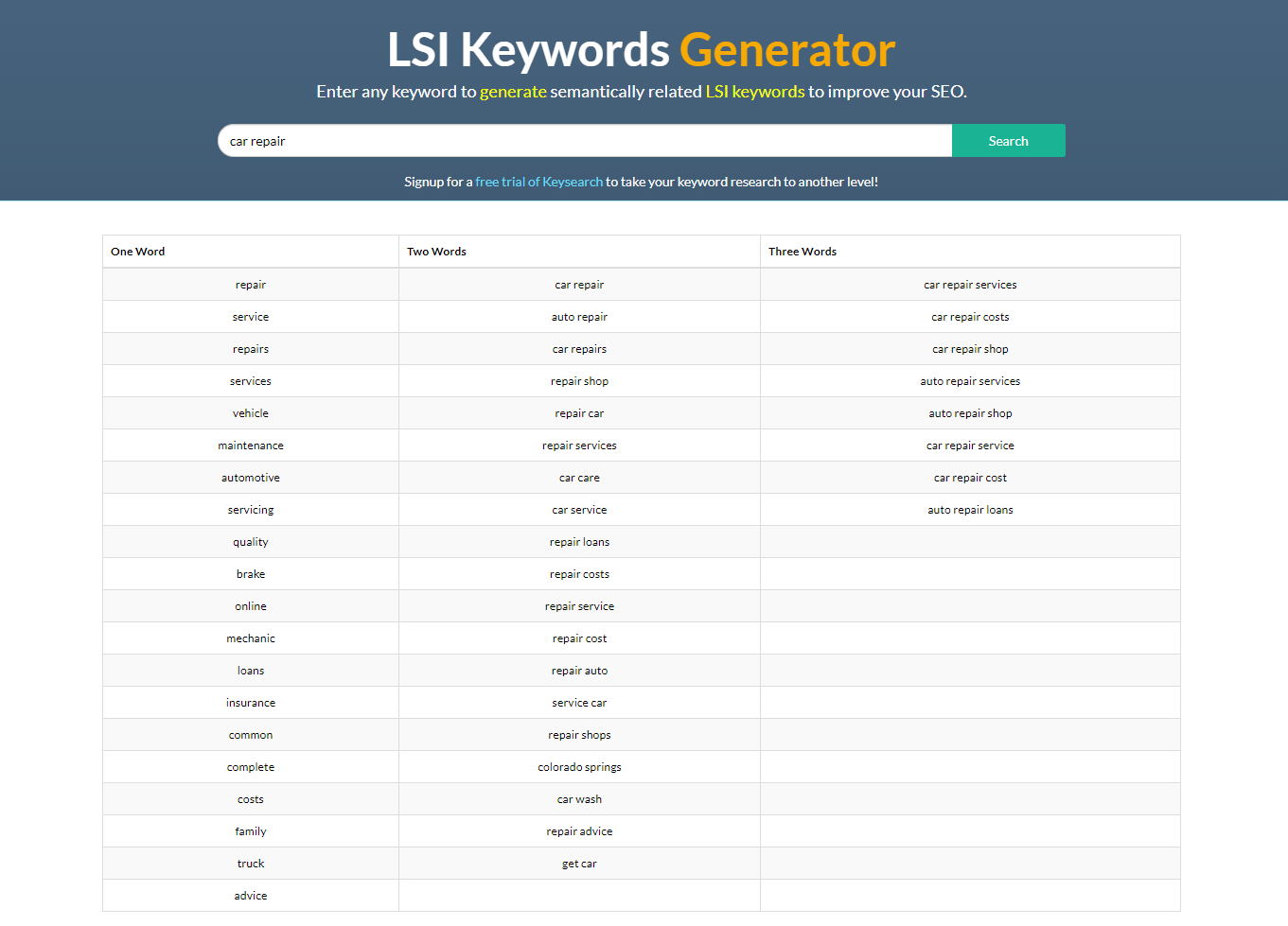
4.How to Use LSI Keywords in Your Content
A. Use LSI Keywords in the Description
A well-written Meta description with the right LSIs can boost your On-Page SEO considerably. Google will notice the LSI keywords and consider your content more relevant to the search query. Over time, your search results will improve, boosting your ranking as well. However, avoid using too many keywords in the Meta descriptions – as Google won’t take keywords stuffing kindly.
If your LSI keyword happens to be a long-tail keyword, you can use it in the title, too. For example, if the main keyword is “content marketing,” then “content marketing strategy” is not only an LSI, but also a long-tail keyword that you can use in the title.
B. Use Semantic Keywords in Your Fresh Content
You can take your SEO content optimization up a notch with LSIs, along with the primary keyword. Make sure the LSI keywords appear as soon as possible, preferably in the first-half of the content. However, do not replace the primary keyword with LSIs – as they are secondary keywords and your content won’t rank without the main keyword.
Also, use only two-to-three LSI keywords to avoid Google penalties for stuffing. Focus on the context and readability of the overall content. Don’t place the LSIs randomly. They should look natural. If necessary, read your content aloud to see if the sentences sound unnatural. If a sentence sounds wonky, play around with a different and more fitting keyword.
C. Use LSI Keywords to Optimize Images
Instead of using the main keyword to optimize image Alt Tags, you can use LSI keywords to send strong signals to Google. You can also revive old images by changing the Alt Tags with fresh trending LSI keywords every time the image is used. However, make sure to use relevant LSI keywords only.
D. Use LSI Keywords to Revive Old Content
Getting started using LSI keywords doesn’t have to be restricted to your fresh content; you can use LSIs to breathe new life into your old pieces.
You can rewrite the old content using new LSI keywords and optimizing the image Alt Tags. This will allow search engines to rediscover the old content. Target the content that has witnessed a gradual decline in web traffic or has had a low search result ranking from the start.
Supplementing some of your primary keywords with LSI keywords will also reduce the overuse of your main keyword. This, in turn, will help to reduce the chances of attracting the keyword-stuffing penalty by Google.
E. Use LSI Keywords for PPC Campaigns
Finally, you can also add LSI keywords to your PPC ads along with your primary keyword. The chances of your ads showing up in the search results will increase substantially. However, it will take some time to produce the desired results of your LSI keyword strategy.
Various factors – including monthly searches, keyword competition, and your website authority, will determine how long it will take to see the results of using LSI keywords. Patience is key!
Parting Words
LSI keywords play a critical role in your search engine optimization efforts. You can use these keywords to boost your semantic SEO and improve your overall search engine rankings. From the main marketing tactics to your PPC campaigns, you can use LSI keywords in almost every aspect of your old and new content. Hopefully, after reading this article, finding LSI keywords and optimizing content to boost your search presence will become a lot easier.
If you need more help with your LSI keyword strategy, connect with us today. The Ayokay team is here to help you with any LSI keyword-related questions. We would love to take this conversation forward!
Jack Shepler is a Marketing and Search Engine Optimization expert. He founded Ayokay, award-winning marketing, and web design firm in Indianapolis, Indiana that has built brands, increased sales for businesses, and helped nonprofit organizations fulfill their missions since 2011. He uses his decades of experience to educate through the Ayokay blog and through public speaking. You can follow him on LinkedIn.

